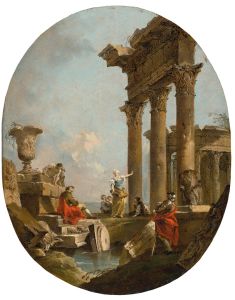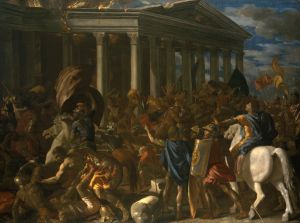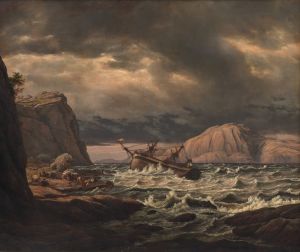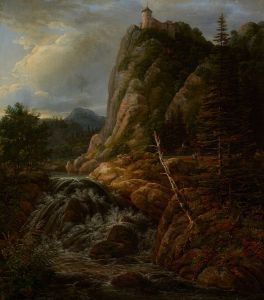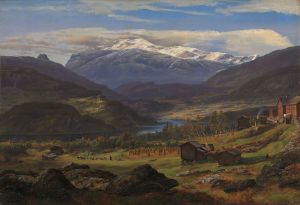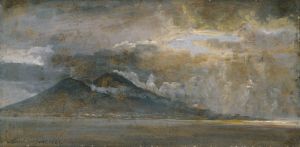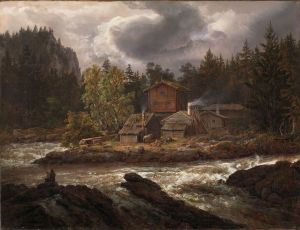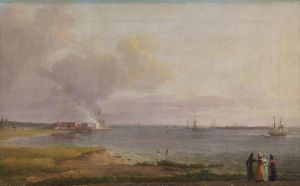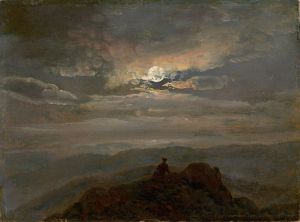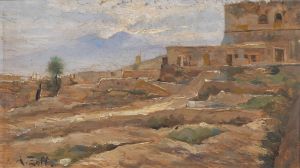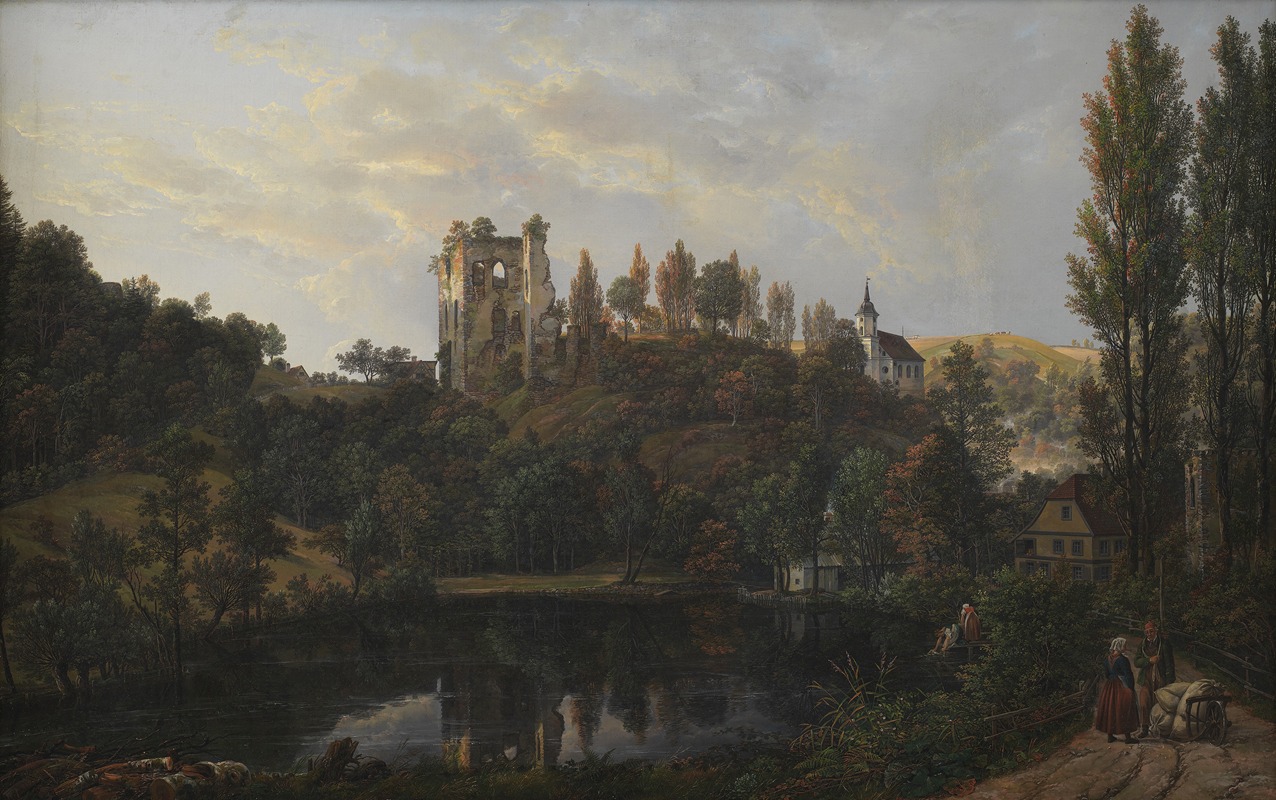
The Castle Ruin at Tharandt
A hand-painted replica of Johan Christian Dahl’s masterpiece The Castle Ruin at Tharandt, meticulously crafted by professional artists to capture the true essence of the original. Each piece is created with museum-quality canvas and rare mineral pigments, carefully painted by experienced artists with delicate brushstrokes and rich, layered colors to perfectly recreate the texture of the original artwork. Unlike machine-printed reproductions, this hand-painted version brings the painting to life, infused with the artist’s emotions and skill in every stroke. Whether for personal collection or home decoration, it instantly elevates the artistic atmosphere of any space.
Johan Christian Dahl, a prominent Norwegian painter, is often regarded as a leading figure in the transition from Romanticism to Realism in the 19th century. His work, "The Castle Ruin at Tharandt," exemplifies his skill in landscape painting and his ability to capture the sublime beauty of nature intertwined with historical architecture.
"The Castle Ruin at Tharandt" depicts the remnants of a medieval castle located in Tharandt, a small town in Saxony, Germany. Tharandt Castle, originally built in the 12th century, played a significant role in the region's history. Over the centuries, it underwent numerous reconstructions and expansions before falling into ruin. By the time Dahl painted it, the castle was a picturesque ruin, embodying the Romantic fascination with the decay of man-made structures and the enduring power of nature.
Dahl's painting captures the essence of the Romantic era's interest in ruins, which were seen as symbols of the passage of time and the inevitable decline of human endeavors. The composition of the painting highlights the castle's crumbling walls and towers, partially overgrown with vegetation, set against a dramatic sky. The interplay of light and shadow in the painting emphasizes the textures of the stone and the lushness of the surrounding landscape.
Johan Christian Dahl was known for his meticulous attention to detail and his ability to convey the atmosphere of a scene. In "The Castle Ruin at Tharandt," he employs a naturalistic color palette, using earthy tones to depict the stone of the castle and the greenery enveloping it. The sky, often a focal point in Dahl's landscapes, is rendered with dynamic brushwork, suggesting an impending storm or the calm after one, adding a sense of drama and movement to the scene.
Dahl's connection to Germany, particularly Dresden, where he spent a significant portion of his career, influenced his choice of subject matter. Dresden was a hub for artists and intellectuals during the 19th century, and its surrounding landscapes provided ample inspiration for painters like Dahl. His work often reflects a deep appreciation for the German countryside and its historical sites, as seen in "The Castle Ruin at Tharandt."
Throughout his career, Dahl was celebrated for his ability to blend the Romantic idealization of nature with a realistic portrayal of its forms. His landscapes often evoke a sense of nostalgia and contemplation, inviting viewers to reflect on the transient nature of human achievements in contrast to the enduring beauty of the natural world.
"The Castle Ruin at Tharandt" remains a testament to Dahl's mastery as a landscape painter and his contribution to the Romantic movement. His work continues to be studied and admired for its technical skill and emotional depth, capturing the imagination of audiences with its timeless depiction of nature's resilience and the haunting beauty of historical ruins.





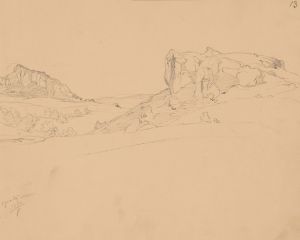
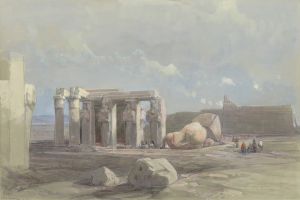
![Ruins of Karnack [Karnak].](/imgs/217533/s/david-roberts-ruins-of-karnack-karnak-f5b9f9ff.jpg)
